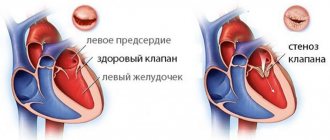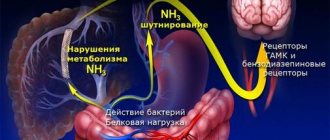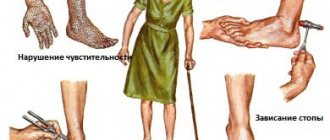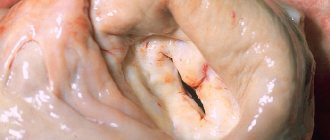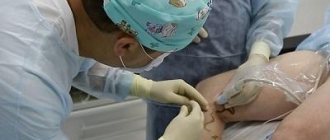Tuberculous coxitis (tuberculosis of the hip joint)
According to statistics, the most common joint affected by tuberculosis is the hip joint.
Symptoms
Tuberculous coxitis is characterized by a long-term chronic course and periodic exacerbations. An exacerbation usually occurs when the intraosseous focus of tuberculosis breaks into the joint cavity. Patients may complain of low-grade fever, weakness, fatigue, and lameness. The pain can be in both the hip and knee joints, which naturally complicates diagnosis. During an exacerbation of the disease, swelling is observed in the joint area and enlarged lymph nodes can be felt.
Diagnostics
Most often, at the initial stages, classical X-ray diagnostics are used; it is better to use digital radiography. Using the image, bone atrophy, local, and later widespread osteoporosis can be diagnosed.
In cases where making a diagnosis may be difficult or simply requires a more detailed diagnosis and a 3-dimensional view of the lesion, spiral computed tomography (SCT) can be used.
Diagnosis of bone tuberculosis
If tuberculosis is suspected, the patient is sent to a specialized dispensary for an in-depth examination and diagnosis.
Diagnostic research methods:
- physical examination,
- clinical blood test,
- bacteriological examination of exudate or bone tissue,
- Mantoux test,
- linked immunosorbent assay,
- x-ray of bones,
- MRI or CT,
- bone biopsy.
One of the main tasks of the differential diagnosis of bone tuberculosis is the exclusion of diseases such as epiphyseal osteomyelitis, joint syphilis, joint hydrops, osteochondropathy, arthritis of various etiologies and tumor processes.
Causes and pathogenesis
The main cause of the pathology is the bacteria Mycobacterium tuberculosis. They are slightly curved rods 1-10 microns long and 0.2-0.6 microns wide. They lack the ability to move and do not form capsules or spores. Obligate aerobes, have the properties of alcohol and acid resistance.
Acid-fast bacilli are the main causative agent of tuberculosis.
This is interesting. For many years, tuberculosis has remained one of the social diseases. March 24 (the day when the German microbiologist Robert Koch first isolated the culture of acid-fast bacilli in 1882) was declared by WHO as the Day against this infection.
Infection with mycobacteria can occur through airborne droplets, as well as through dirty hands, food, etc. It is known that the favorite place of localization and pathological activity of the microbe is the lungs - tissues that are maximally saturated with oxygen. Why does bone tissue damage occur?
TBS of the lungs is most often diagnosed
Once in the body, Koch's bacillus spreads through the bloodstream, lingering in certain tissues, including bones. In some cases, secondary infection from an existing inflammatory focus in the lungs is possible.
After hematogenous spread of MBT, they may settle in:
- synovial membrane of the joint;
- epiphyses of bones;
- metaphyses of bones.
Subsequently, small tuberculous foci develop in these tissues, which grow slowly, but over time lead to serious and irreversible changes.
Among them:
- obliteration of the joint cavity;
- creation of fistulas, abscesses;
- ankylosis of the joint.
Pathogenesis of the disease
However, the entry of an infection into the body does not always lead to infection. The state of the child’s immunity and health as a whole plays an important role in pathogenesis.
Tuberculosis often develops against the background of:
- regular excessive load on the musculoskeletal system;
- hypothermia;
- insufficient or unbalanced nutrition;
- injuries;
- concomitant chronic diseases or infections;
- unsatisfactory material and housing conditions;
- prolonged contact with the bacteria excretor;
- severe psychotraumatic situations, stress;
- taking certain drugs that affect the functioning of the immune system (corticosteroids, immunosuppressants).
Often infection occurs against the background of weakened immunity
Treatment of bone tuberculosis
Osteoarticular tuberculosis is of a secondary nature, therefore general and local treatment is carried out, aimed at strengthening the body's resistance and limiting pathological changes. The recovery process is always long and can take from one and a half to three years of continuous comprehensive treatment, which includes:
- regular nutritious meals;
- prolonged exposure to fresh air;
- orthopedic treatment (in case of damage to the spine - bed rest in a plaster bed, wearing a plaster and removable corset; in case of damage to the joints of the limbs - application of a plaster cast);
- prescription of anti-tuberculosis drugs;
- surgical treatment (joint resection, endoprosthetics, alloplasty, intra-articular necrectomy, etc.).
Return to list
Classification
The following clinical classification of tuberculosis of bones and joints is used: Localization of the process:
- Tuberculosis of bones and joints of the spine:
1. Primary osteitis.
2. Progressive spondylitis.
3. Chronic destructive spondylitis.
4. Metatuberculosis spondylopathy.
- Tuberculosis of bones and joints
1. Primary periarticular osteitis.
2. Progressive arthritis.
3. Chronic destructive arthritis.
4. Metatuberculous arthrosis.
- Tuberculosis of the flat bones of the pelvis and chest. Tuberculosis of the bones and joints of the skull. Tuberculous-allergic synovitis and arthritis.
activity :
- questionable activity;
- active form;
- loss of activity;
- attenuation of the process.
Diet for tuberculosis
Nutrition for tuberculosis should be aimed at strengthening the immune system.
- The patient should consume from 120 to 150 g of pure protein per day. It is needed for the production of antibodies. Sources of protein: fish, seafood, dairy products, lean poultry and fish, liver of cattle and fish.
- The amount of fat the patient needs is from 50 to 80 g per day. They are necessary to restore cell membranes that have been damaged by mycobacteria. To avoid a shortage of fats, you need to eat butter and vegetable oils, fish oil, lard, and animal fats in small quantities.
- Carbohydrates for tuberculosis should correspond to the age norm - about 400 g per day. They can be obtained from cereals and vegetables. Eating more than 80 g of confectionery products per day is not recommended.
- Mineral salts normalize metabolism and improve the functioning of the endocrine system, thereby increasing the body's defenses. Their sources can be: tomatoes, figs, cauliflower, herbs, cheeses, cottage cheese.
Causes of bone tuberculosis
Bone tuberculosis is always a consequence of hematogenous transfer of the tuberculosis bacillus from the primary source of infection (with late reactivation of the process - from old tuberculosis foci). A reactive inflammatory process begins around the pathogen, an infectious granuloma develops, with the growth of which the bone substance dissolves, abscesses, fistulas and sequesters are formed.
Osteoarticular tuberculosis occurs in all age groups, but due to the anatomical and physiological characteristics of a growing organism, which is characterized by a richly developed vascular network of the epiphyses of bones and vertebral bodies, the disease poses the greatest threat to children. In old age, this form of tuberculosis develops relatively rarely.
The development of bone tuberculosis can be caused by the influence of various factors:
- poor social conditions,
- fasting or malnutrition,
- frequent infectious diseases,
- chronic stress,
- long-term treatment with glucocorticoids or immunosuppressants;
- HIV.

